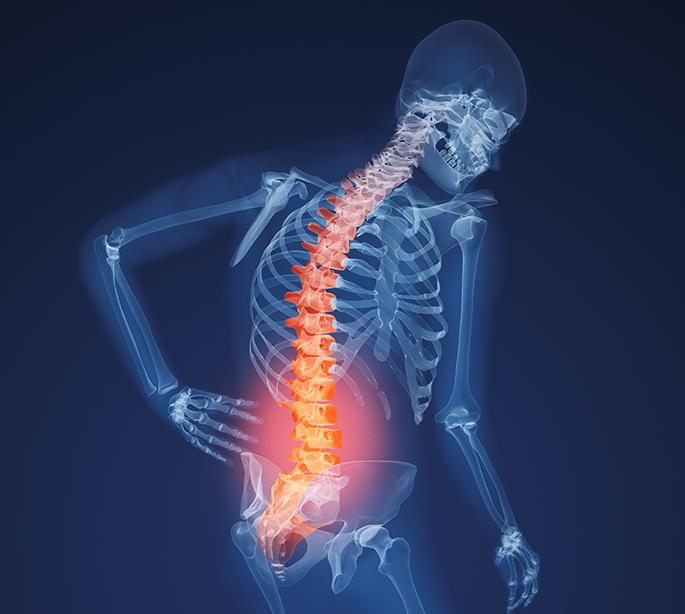Feel Familiar?
I’ve heard it hundreds of times. “I hurt my back and put heat on it. It felt so good I slept on my heating pad and this morning I couldn’t get out of bed!”
Like the bumper sticker says, shit happens. If you’re an active person, heck, even if you’re a desk jockey and couch potato, you’re susceptible to minor injuries. Arnie falls skiing, lands on a stump, and sustains a great big bruise on his side. While boating on the river, Billy Bob digs too deeply with his paddle and wrenches his shoulder. Chrissie hauls 50 pounds of gear three miles to a new climb, and the next morning her back is so stiff and painful she has trouble using the toilet.
Arnie is a skier with a bruise or contusion. Not generally a serious injury, but he needs to assess the damage to underlying parts. In this situation, he could have a broken rib, collapsed lung, or an injury to his spleen, liver, or kidneys. If he has difficulty breathing, faintness, vomiting, or more pain than expected, his bruises need attention. If his injuries were in his extremities, especially if the injury involved crushing, he should carefully assess the sensation and blood supply downstream from the injury.
Billy Bob has a sprain of the shoulder ligaments or a strain of the muscles of the chest, back, or shoulder (or all three). In addition to assessing sensation and circulation, he needs to assess the motion in his shoulder. If he has none, the joint might be dislocated and he needs urgent attention. If he has some, but it’s quite limited (for a shoulder he should be able to raise his arm in front and to the side above shoulder height), he might have a completely torn ligament and needs proper medical treatment.
Chrissie probably has an overuse injury. Generally, I find a delay in onset of symptoms very reassuring. If she doesn’t have numbness, tingling, weakness, or pain in her legs, she can safely follow the basic treatment recommendations below and expect good results. Moderate aching hours or days after a new or unusually strenuous activity, especially if the location is not the lower back, is rarely serious. In the future, though, she should be better physically prepared for the work she expects her muscles to do. Establishing and maintaining a solid aerobic base, good flexibility, and adequate strength can help prevent weekend warriors from suffering.
Assuming there are no worrisome symptoms or signs, the basic treatment for all soft-tissue injuries is simple and straightforward: RICE for two days, then follow with early motion.
Rest to allow the bleeding and swelling to stabilize. You may never see a bruise on the surface, but it’s still happening. Limit the amount and duration of all activity to decrease pain and speed recovery.
Ice the injured area as soon and as often as possible. I suggest 10-15 minutes of cold application every two to three hours for the first 48 hours, while others suggest more continuous application the first day.
Compression can limit the amount of bleeding and swelling, with the possible risk of impaired circulation. Apply a pad over the injured area and wrap it with an elastic bandage. If downstream areas get cold, pale, purple, or numb, unwrap right away.
Elevate the injury if possible. This decreases the throbbing pain and helps reduce bruising and swelling.
After the first 48 hours, start cautiously moving the injured part. Apply moist heat for 10-15 minutes two to four times daily and then stretch the area, if possible. It’s recently become fashionable to continue using ice two to four times daily after the initial phase, but the research is thin on this subject. For now, either is okay.
Above all, DON’T PUT HEAT ON A SOFT TISSUE INJURY IN THE FIRST 24 HOURS. If you do, don’t tell me about how much worse you hurt. I told you so.
Dean Center works at Family Doctors Urgent Care in Bozeman.
Did You Know
Playing outside is normal, healthy, and fun for children and adults alike, but sports and outdoor activities can also present danger. In the U.S., approximately three million children under the age of 14 are injured during sports or recreational activities annually. Most of these injuries are the result of falls, being struck by an object, collisions, or overexertion during unorganized or informal sport activities. Contact sports such as football tend to have the highest rates of injury, but injuries incurred during individual sports and recreational activities are most severe. Of the approximately 20 million children and six million high-school-aged athletes who participate in competitive or recreational sports outside of school, about 20 percent are hurt each year, with one-quarter of those injuries considered serious. These children and adolescents, aged 5 to 14 years old, account for about half of all sports related injuries for all age groups, and (unfortunately for us geezers) sports-related injuries tend to become more serious with age. What sport or activity is the single most dangerous? At over 320,000 hospital visits yearly, young cyclists are at the highest risk of serious injury.
-Drew Pogge






